Record Reviews
4 Reviews Found. Use search to find more reviews or follow the links in the review text.
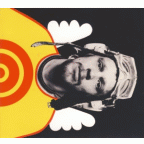  | VESA-MATTI LOIRI ~ 4+20
PORTER 1512 (Barcode: 656605782027) ~ FINLAND ~ Jazz-Rock-World Fusion
Recorded: 1971 Released: 2011
"4 + 20Find albums with this title", recorded during several sessions in March 1971, was the debut album released by Finnish flautist / singer / actor Vesa-Matti LoiriFind albums by this artist. Born January 4, 1945 Loiri was already a "familiar face" on the modern Finnish Jazz scene at the time. Of course it is hard to believe that any of the album´s participants, including Loiri himself, could have possibly imagined that 40 years later he would be considered as one of the central pillars of the Finnish Culture. A true Renaissance man, Loiri developed over the years a spectacular career, both as a musician and as an actor / comedian. He recorded dozens of albums, many of which were immensely popular in his native country. He even represented Finland in the Eurovision Song Contest in 1980, singing a song dedicated to his beloved flute. He also starred in dozens of movies, many of which are considered absolute classics.
Loiri´s musical career is quite diverse, but the most important aspect of it is dedicated to his performances of songs with the lyrics written by the great Finnish poet Eino LeinoFind albums by this artist (1878-1926), the great pioneer of Finnish poetry. Loiri recorded several albums dedicated to Leino´s poetry, all of which are quite extraordinary, both musically and lyrically. Although Loiri was never a Jazz musician per se, he always cooperated on his albums with many Finnish Jazz musicians and many of these albums can be considered as Jazz albums, in a broader sense. The Eino Leino albums, therefore, should be considered as part of the Jazz & Poetry movement, which was quite popular in Europe since the 1960s.
The passionate love affair between Jazz music and Poetry originated during the Beat movement in the 1950s, when US writers and poets discovered that the freedom and improvisational character of modern Jazz could be also utilized in modern writing. The spiritual proximity between the various disciplines of Modern Art & Literature created many cross-media encounters, with Jazz musicians and poets often performing together. In the early 1960s Jazz & Poetry crossed over to Europe, first into UK and then spreading quickly all over the Continent. Jazz musicians and poets created passionate collaborations in France, Germany, Poland and the Scandinavian countries.
But in a similar way as to what happened to American Jazz, when it was absorbed by the Europeans, who amalgamated it with their European musical heritage, Jazz & Poetry also changed, when music was being composed by the Europeans not only to accompany contemporary literary works, but also Classic literature and poetry, as far back as Shakespeare´s sonnets. European Jazz musicians / composers often created music to accompany literary works from their National heritage, similar in a way to the inspirations of the European Romantic Classical composers earlier on. In Finland the Jazz & Poetry movement produced some extraordinary achievements and many of the country´s most illustrious musicians were involved with it at least at some stage of their career.
Vesa-Matti Loiri´s contributions to the movement are surely amongst the most important ones. On the gatefold cover of the "4 + 20" LP Vesa-Matti Loiri writes as follows: "This record was made spontaneously, without any great preparations. It is not meant to serve commercial purposes. This music has risen from friendship." This is in fact a concise and completely truthful description of this album. The album features Loiri the flute player. His vocal contributions here are mostly accidental and humorous (his comedian nature), except for one track, where he actually sings. For the recording he invited a group of friends, which in retrospect reads like the who´s who of Finnish Jazz at the time: saxophonist / flautist Esa PethmanFind albums by this artist (who plays piccolo flute here), saxophonist Eero KoivistoinenFind albums by this artist, organist Tuomo TanskaFind albums by this artist, guitarist Hasse WalliFind albums by this artist (who also helped Loiri with most of the arrangements), bassist Pekka SarmantoFind albums by this artist and drummer Esko RosnellFind albums by this artist. Several other players contribute percussion and vocal tidbits. The music is very versatile and ranges from Jazz via Folklore to Rock and even Classical. A couple of Herbie MannFind albums by this artist´s tunes – an obvious choice by a flautist, some folklore, both international and Finnish, some Rock and some "serious" music (see below), all arranged in a Jazzy fashion and performed joyously yet somewhat informally, as indicated by Loiri´s quote. Nevertheless there are plenty of great solos here and the overall level of performance is definitely outstanding.
The album´s title is of course the Stephen StillsFind albums by this artist´ tune, first heard on the Crosby, Stills, Nash & YoungFind albums by this artist legendary "Déjà VuFind albums with this title" album. It is used here as a repeated "theme", appearing repeatedly between the tracks. The album´s most interesting track, which is the song "Itkevä Huilu", featuring Loiri´s vocals, is a clear precursor of his future Jazz & Poetry work. The song´s lyrics were written by the Finnish poet Larin KyöstiFind albums by this artist and the music by the great Finnish Classical composer Oskar MerikantoFind albums by this artist. Overall the music on this album is conserved, as in a time capsule, losing nothing of its joy and playfulness, good nature and musical friendship. Such qualities should definitely be preserved! Thanks to PorterFind albums on this label Records for making this musical treasure available again!
Side Note
The above are my liner notes included on this album's artwork.
I am honored when asked by the Artists to write liner notes for their albums, always hoping that my words reflect the true spirit of the music. This is also a symbol of our mutual respect and friendship developed over the years.
The same is also true when Record Labels ask me to write liner notes for their releases, mostly in the case of reissues of archival albums, which is a symbol of their appreciation of my knowledge and historical perspective and my recognition of their dedication to the preservation of the history of recorded music and the effort to keep human Culture and Aesthetics alive.
| | Updated: 19/09/2018Posted: | CD 1 Mini-Sleeve Remastered Recommend To A Friend |
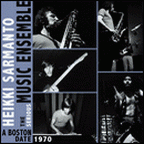  | HEIKKI SARMANTO SERIOUS MUSIC ENSEMBLE ~ A BOSTON DATE
PORTER 4002 (Barcode: 656605854625) ~ FINLAND ~ Jazz
Recorded: 1970 Released: 2008
This is one of those albums, which immediately invoke the recurring question: "How many recordings like this one remain hidden and unreleased all over the world?" The fact that it took 38 years for this gem to surface is criminally negligent, to put it mildly, with the only solace being the proverbial better late than never. Finnish pianist / composer Heikki SarmantoFind albums by this artist has been one of my favorite musicians for the last four decades, always awe-inspiring and never disappointing. His life-time achievements indisputably deserve a book-sized biography (unfortunately not written yet) and his role as Europe´s leading Jazz personality and a prominent creator of the emancipated European Jazz is sadly little known outside of a tiny circle of connoisseurs and researches. In fact the entire Finnish music scene often appears to be the one of world´s best hidden secrets, which is amazing in view of the miraculous contribution of Finnish musicians and composers to the Pantheon of the overall human musical culture. Apparently even the most devoted music fans and critics often suffer from chronic narrow-mindedness and Xenophobia, with Americans leading the camp, with pride and remarkable consistency, over the years.
Although recorded in 1970, this session does not reflect Sarmanto´s early musical steps. He was 31 years old at the time and already a seasoned musician, with extensive Classical Music education (a graduate of the Helsinki Sibelius Music Academy - the country´s most prestigious musical education institution) and extensive Jazz experience going back almost a decade earlier as member of several Jazz ensembles active on the country´s burgeoning scene. In 1964-65 Sarmanto took part in the recording of Finland´s first modern Jazz album, the legendary "The Modern Sound Of FinlandFind albums with this title" by saxophonist / flautist Esa PethmanFind albums by this artist, and his piano playing on that album already sounds refined and focused. In 1968 Sarmanto was the first Finn to be awarded a scholarship at the Berklee College of Music in Boston, which gave him a chance to get some formal Jazz education (the Jazz department of the Sibelius Academy would be established only in the early 1980s, and of course Sarmanto would be appointed its first department head).
Sarmanto used his time in Boston not only to expand his formal Jazz horizons, but also to mingle and play as much as he could on the local Jazz scene, which was quite active at the time. The Berklee students and the local musicians often gigged together and soon enough ensembles were formed. Following a brief home visit in 1969, during which Sarmanto recorded his first album as a leader, a live sextet recording released as "Flowers In The WaterFind albums with this title" (on which Pethman is also featured), he returned to Boston to "wrap up" his Berklee affairs. During that period he formed the quintet, quite accidently, which is often the best way for things to happen, which is featured on this semi-professional recording. The quintet consists of Sarmanto on piano, another Finnish giant, saxophonist / flautist Juhani AaltonenFind albums by this artist, who followed Sarmanto to Berklee but lasted only one semester (without a grant the finances were just against all odds), Czech bassists George MrazFind albums by this artist, who also arrived in Boston on a Berklee grant (together with compatriot pianist Jan HammerFind albums by this artist), escaping the brutal Warsaw Pact forces invasion of their homeland, following the brief "Spring of Prague" in 1969, the first major crack in the Berlin Wall. The remaining two musicians were guitarist Lance GundersonFind albums by this artist and drummer Craig HerndonFind albums by this artist, both Bostonians at the time. The quintet was nicknamed, half-jokingly, The Serious Music EnsembleFind albums by this artist, a name which would stick to several Sarmanto´s groups in the future, featuring the core of this quintet.
The three Europeans and two Americans obviously had no difficulty in communicating musically, and it´s hardly surprising that they chose to play mostly Free Form, for several reasons. The air was still reverberating with the sounds of Albert AylerFind albums by this artist, Eric DolphyFind albums by this artist and John ColtraneFind albums by this artist, with the US Free Jazz scene at its peak by the end of the 1960s (unfortunately soon to be almost completely neglected, passing the torch to the Europeans). The limited, if any, rehearsal time the ensemble had before entering the studio, obviously left most of the content to be developed at the spur of the moment, making collective improvisation the only logical path to follow. And perhaps the youthful spirit of rebellion had also something to do with it, considering Berklee´s extreme conservatism, which is legendary even today. Aaltonen, the oldest and most experienced musician on board, already had extensive Free Jazz practice, after playing with Finnish pioneers of the genre, most notably with drummer Edward VesalaFind albums by this artist, and his contributions are the most consistent, with remarkable power of expression, intensity and technical brilliance rivaling the Masters of the genre.
The six pieces played during the session, all composed by Sarmanto, are performed in one continuous flow with no gaps between them. Typically, after a briefly stated theme, the musicians enter a series of exchanges, with one, two or even three players soloing simultaneously, with the rhythm section frequently changing the tempo. Most of the material is up-tempo, except for the beautiful ballad, which ends the set (dedicated to Margareth ChaloffFind albums by this artist, the legendary piano teacher), which is the gentlest and most structured piece on the album, featuring the exquisite bass work by Mraz and more typical of Sarmanto´s future output. In many respects the session is quite typical European Free Jazz, resembling many similar musical encounters happening in Europe at the time, especially in the UK, but also in Poland, Germany and the Netherlands. It is quite distinctly different from American Free Jazz, which demonstrates rawer and more spontaneous approach but lacks the European Classical Music background, which is deeply implanted in the minds of European musicians, evident even in the most extreme Improvised Music experiments. In many respects, this session is probably one of the most "European sounding" recordings ever captured at a US studio.
It is really interesting to compare this session with the material recorded by the almost identical quintet (exchange Mraz with Heikki´s brother bassist Pekka SarmantoFind albums by this artist) just a few months later and released as Sarmanto´s second (first studio) album "CounterbalanceFind albums with this title" (also reissued on PorterFind albums on this label Records). With Aaltonen playing exclusively flute and Sarmanto switching to Fender Rhodes, this seems to be a completely different group, even if still pretty much in the Free vain. The European influence simply becomes overwhelming, changing the music dramatically. Even if the sound quality of this recording is not up to modern digital standards (the recording was most probably not intended to be commercially released), the musical content and the immense historical importance of this session make it an indispensible document of the highest value.
Kudos to Luke MoslingFind albums by this artist, the brave owner of Porter Records, for releasing this treasure and making it available to us, the music lovers, and saving a lost gem from extinction. Sarmanto´s followers worldwide will be obviously delighted to hear this, as should be every connoisseur of good music, especially those who follow the emergence of the modern European Jazz. Brilliant stuff!
Visitors' Comments
Dr. Rafael Augusto Lara Palmeros
One of the most impressive, extraordinary and wonderful work from real modern European Jazz.¡¡Very essential!!. More of five stars.
| | Updated: 29/09/2017Posted: | CD 1 Recommend To A Friend |
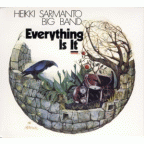  | HEIKKI SARMANTO ~ EVERYTHING IS IT
PORTER 1514 (Barcode: 656605789521) ~ FINLAND ~ Jazz-Classical Fusion
Recorded: 1972 Released: 2011
"Everything Is ItFind albums with this title", recorded on September 13 & 14, 1972, was the fourth album released by Finnish pianist / composer Heikki SarmantoFind albums by this artist. Born June 22, 1939 Sarmanto was considered already a "veteran" of the modern Finnish Jazz scene at the time. A graduate of the Sibelius Academy in Helsinki, Sarmanto contributed his talents to multiple local ensembles active on the burgeoning Finnish Capital´s Jazz club scene and participated in several landmark recordings in the 1960s. His earliest recordings (1962) were with saxophonist / flautist Esa PethmanFind albums by this artist as a regular member of his group, culminating with the recording of "The Modern Sound Of FinlandFind albums with this title" (1964), which is considered as the first completely original modern Finnish Jazz album. In the following year Sarmanto recorded the album "For Friends And RelativesFind albums with this title" (1965) as a member of the Christian Schwindt – Otto DonnerFind albums by this artist quintet, also considered as an early milestone of Finnish Jazz.
In 1968 Sarmanto was the first Finn to be awarded a scholarship at the Berklee College of Music in Boston, which gave him a chance to get some formal Jazz education (the Jazz department of the Sibelius Academy would be established only in 1983, and of course Sarmanto would be appointed its first department head). Sarmanto used his time in Boston not only to expand his formal Jazz horizons, but also to mingle and play as much as he could on the local Jazz scene, which was quite active at the time. The Berklee students and the local musicians often gigged together and soon enough ensembles were formed.
Following a brief home visit in 1969, during which Sarmanto recorded his first album as a leader, a live sextet recording released as "Flowers In The WaterFind albums with this title" (recorded July 8, 1969) he returned to Boston to "wrap up" his Berklee affairs. During that period he formed a quintet, quite accidently, which is often the best way for things to happen, which played mostly Free Jazz based on the heritage of Albert AylerFind albums by this artist, Eric DolphyFind albums by this artist and John ColtraneFind albums by this artist. The quintet recorded a session at a local studio, which was formally released on CD only 38 years later as "A Boston DateFind albums with this title" (recorded September 18, 1970, released 2008) on PorterFind albums on this label Records. The quintet consisted of Sarmanto on piano, another Finnish Giant, saxophonist / flautist Juhani AaltonenFind albums by this artist, who followed Sarmanto to Berklee but lasted only one semester (without a grant the finances were just against all odds), Czech bassists George MrazFind albums by this artist, who also arrived in Boston on a Berklee grant (together with compatriot pianist Jan HammerFind albums by this artist), escaping the brutal Warsaw Pact forces invasion of their homeland, following the brief "Spring of Prague" in 1969, the first major crack in the Berlin Wall. The remaining two musicians were guitarist Lance GundersonFind albums by this artist and drummer Craig HerndonFind albums by this artist, both Bostonians at the time. The quintet was nicknamed, half-jokingly, The Serious Music EnsembleFind albums by this artist, a name which would stick to several Sarmanto´s groups in the future, which featured the core of this quintet.
Following his graduation from Berklee Sarmanto returned to Finland, with Gunderson and Herndon following suit (they both decided to live in Finland for a while). Since Mraz opted to stay in the US and Aaltonen already returned to Finland earlier, Sarmanto had four members of his quintet in place. Mraz was replaced by Sarmanto´s brother, bassist Pekka SarmantoFind albums by this artist, and this new lineup recorded Sarmanto´s second (first studio) album "CounterbalanceFind albums with this title" (recorded June 8, 1971 - also reissued on Porter Records). A remarkable album, which features Aaltonen playing flute exclusively and Sarmanto switching to Fender Rhodes, and seems to be recorded by a completely different group, even if still pretty much in the Free Jazz vain. The European influence simply becomes overwhelming, changing the music dramatically.
Recorded just three months after "Counterbalance", "Like A FragonardFind albums with this title" (recorded September 14, 1971), the third album by Sarmanto, was the first giant step in Sarmanto´s exceptional musical journey. In contrast to his earlier recordings, which consisted of separate and unrelated musical themes, this is the first time Sarmanto, the composer, undertakes the task of producing a concept album, which consists of a series of compositions connected by one common idea. The result becomes a Jazz Mass, a novel idea, which Sarmanto will pursue again in the future with the extraordinary "New Hope Jazz MassFind albums with this title" (1979).
"Everything Is It", which followed a year later, was another giant step in the same direction, but on a grander scale in every direction. The ensemble is expanded into a Big Band; the music includes a fully developed suite in four parts, which lasts for over 28 minutes and two additional pieces, both lengthy as well (7 and 11 minutes); the scope of the compositions now amalgamates elements of Jazz, Folklore and Classical music.
In retrospect Sarmanto´s audacity and vision are truly prophetic, since such attempts to create cross-genre music would become commonplace only decades later. The Big Band assembled for this recording is a bona fide Who´s Who of Finnish Jazz at the time and includes the finest soloists, many of which were leaders of their own ensembles. Consisting of three trumpets, two trombones, six saxophones, piano, bass and two drummers (another bold decision by Sarmanto) the Big Band enables the composer a much wider scope of tonal expression, which of course he takes full advantage of. The vocal parts, or the libretto (in English), written by Diana GlassFind albums by this artist, is performed by a young and promising soprano from the Opera of Helsinki – Taru ValjakkaFind albums by this artist. The level of musicianship and individual improvisation is absolutely brilliant and is great evidence of how talented these musicians were. Considering the fact that this complex and challenging music was recorded in just two days emphasizes this fact as well.
This is European Jazz at its best, taking the essence of the Jazz spirit and combining it flawlessly with other musical sources to create a perfect amalgam. It remains untouched by the tides of time, a classic. Thanks to Porter Records for making this musical treasure available again!
Side Note
The above are my liner notes included on this album's artwork.
I am honored when asked by the Artists to write liner notes for their albums, always hoping that my words reflect the true spirit of the music. This is also a symbol of our mutual respect and friendship developed over the years.
The same is also true when Record Labels ask me to write liner notes for their releases, mostly in the case of reissues of archival albums, which is a symbol of their appreciation of my knowledge and historical perspective and my recognition of their dedication to the preservation of the history of recorded music and the effort to keep human Culture and Aesthetics alive.
| | Updated: 19/09/2018Posted: | CD 1 Mini-Sleeve Remastered Recommend To A Friend |
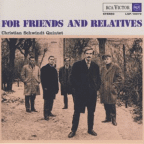 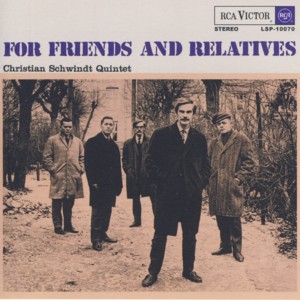 | CHRISTIAN SCHWINDT QUINTET ~ FOR FRIENDS AND RELATIVES
ROCKET 068 (Barcode: 6417138607669) ~ FINLAND ~ Jazz
Recorded: 1963 - 1965 Released: 2011
This is a reissue of the seminal album by Finnish drummer / composer / bandleader Christian SchwindtFind albums by this artist, one of the Godfathers of modern Finnish Jazz. This album is considered as the second modern Jazz release in Finland, preceded only by the Esa PethmanFind albums by this artist album "The Modern Sound Of FinlandFind albums with this title", which was recorded in late 1964 / early 1965, whereas this album was recorded in November 1965. Collectors interested in more fine details should check out the phenomenal and pioneering Finnish Jazz Discography by Hans WesterbergFind albums by this artist, published in 1977 or my publication on this subject from 1992, both published by the Finnish Jazz Federation.
The original album presented seven original compositions, which were recorded in two separate sessions. Six compositions were recorded by a new lineup of the quintet that included trumpeter Otto DonnerFind albums by this artist, saxophonist Erik DannholmFind albums by this artist, pianist Heikki SarmantoFind albums by this artist and bassist Tapani TamminenFind albums by this artist. The compositions were three each by Donner and Sarmanto. The seventh composition was recorded with the old lineup of the quintet that included pianist Pentti HietanenFind albums by this artist, who also composed the music, and bassist Pekka SarmantoFind albums by this artist. The expanded reissue adds three bonus tracks (two by Hietanen and one by Donner) recorded in late 1963 and early 1964 by the a.m. old lineup and saxophonist Tuomas KotovirtaFind albums by this artist instead of Dannholm. Sadly for such monumental reissue the research was extremely sloppy and the cover art is a reprint of the original, which includes several mistakes.
The music is of course phenomenal, and reflects the birth of modern Finnish / European Jazz, which was exploding across the continent, finally breaking with the stale American tradition and searching for new ways of expression. It is fascinating to compare this music to the recordings made across Europe at this pivotal time and see the similarities that Jazz musicians in UK, Poland, Germany and other countries were creating at the time, exploring the wonderful Freedom and breaking all existing boundaries on the fly.
In retrospect it is sad that this album is the only recorded legacy by Schwindt as a leader, but let us not forget that he co-founded of the LoveFind albums on this label Records label (with Donner and journalist Atte BlomFind albums by this artist) in 1966, which changed the Finnish music landscape dramatically.
This album is an icon of modern European Jazz and although the music was recorded fifty-five years ago, it still sounds absolutely astounding and completely relevant. Sadly this reissue is now very hard to find and it’s a crime that this album is not available on the market for new generations to learn from!
| | Updated: 29/08/2020Posted: 29/08/2020 | CD 1 Remastered Bonus Tracks Essential Recommend To A Friend |
|







